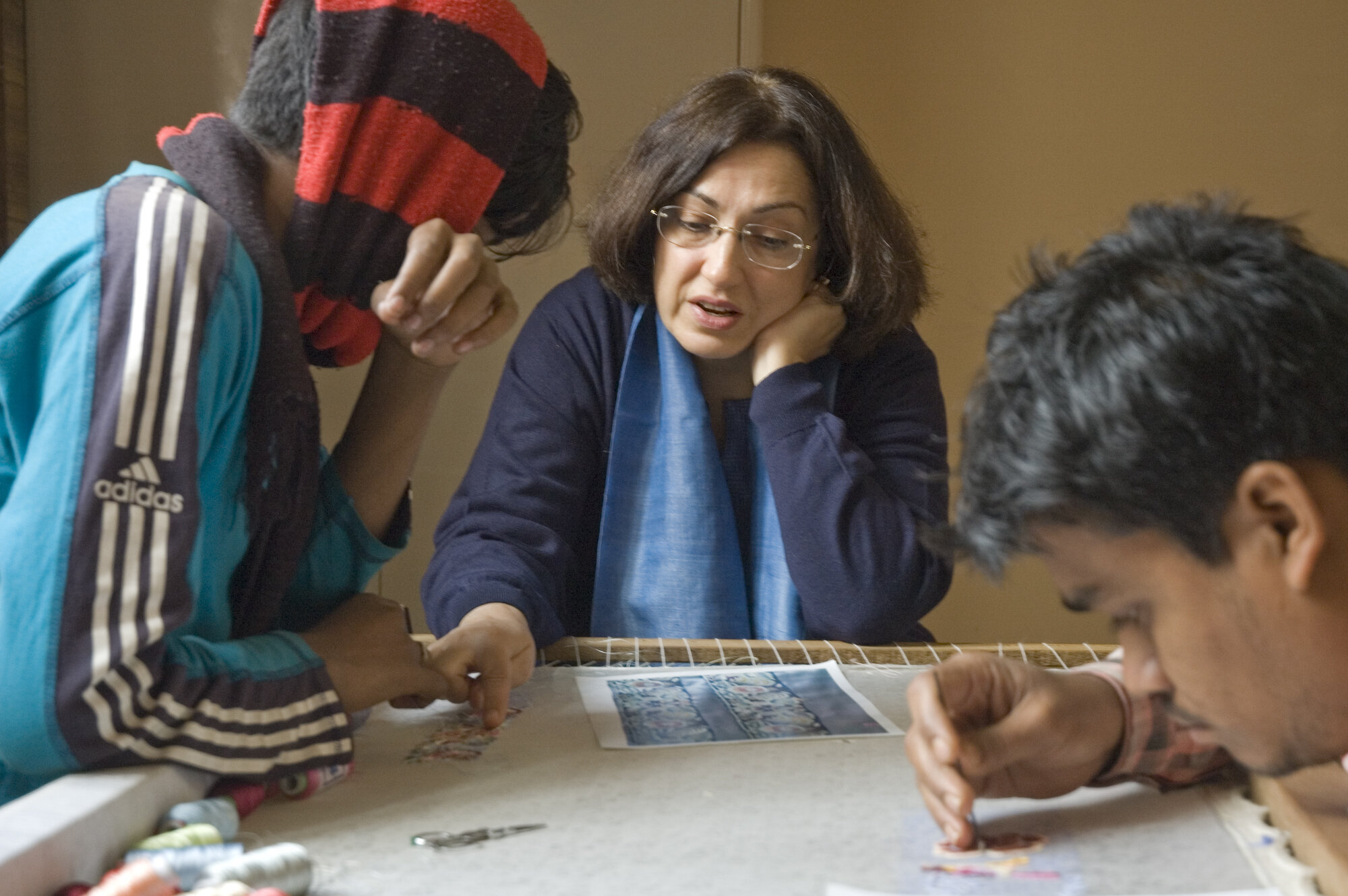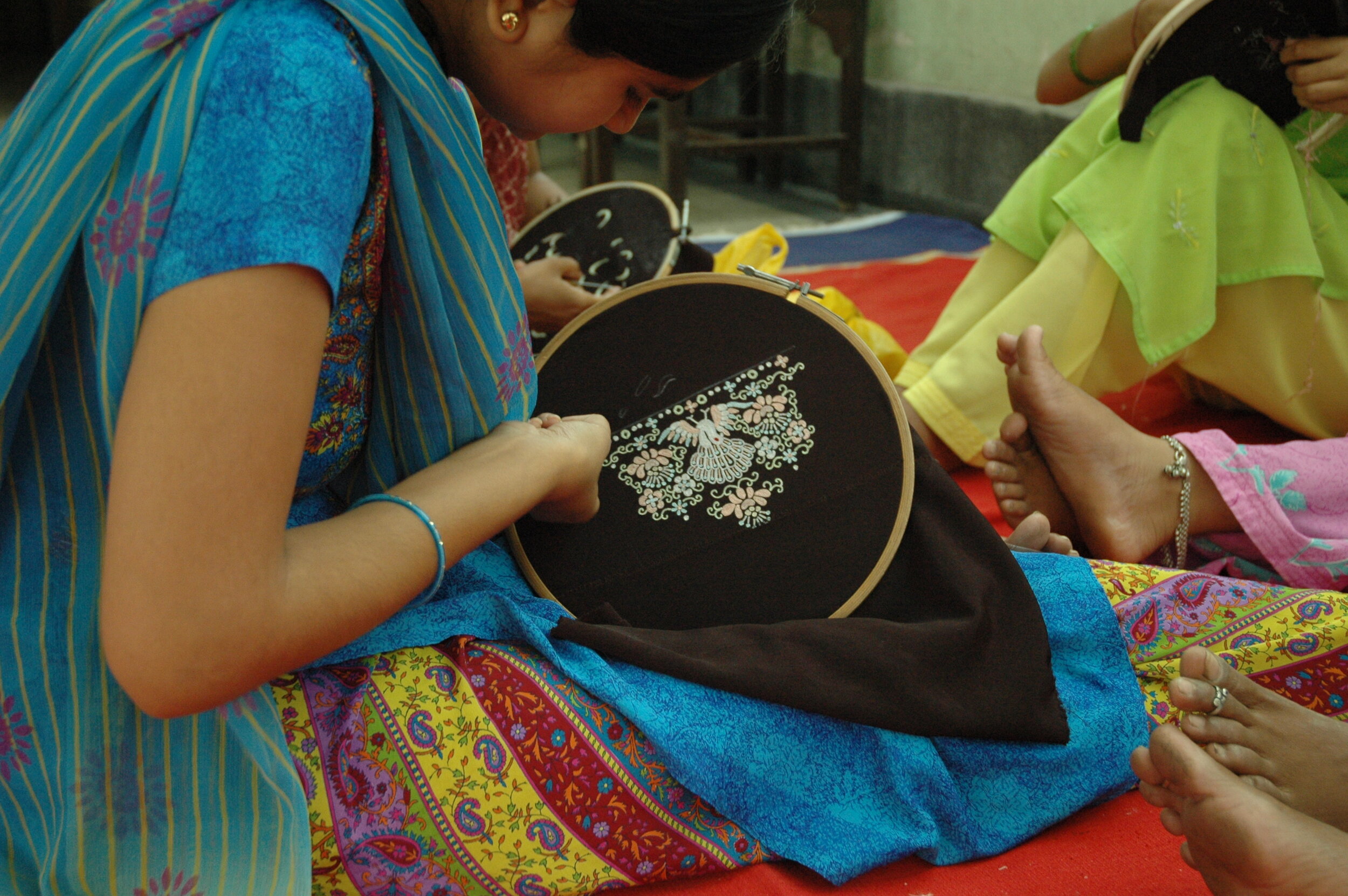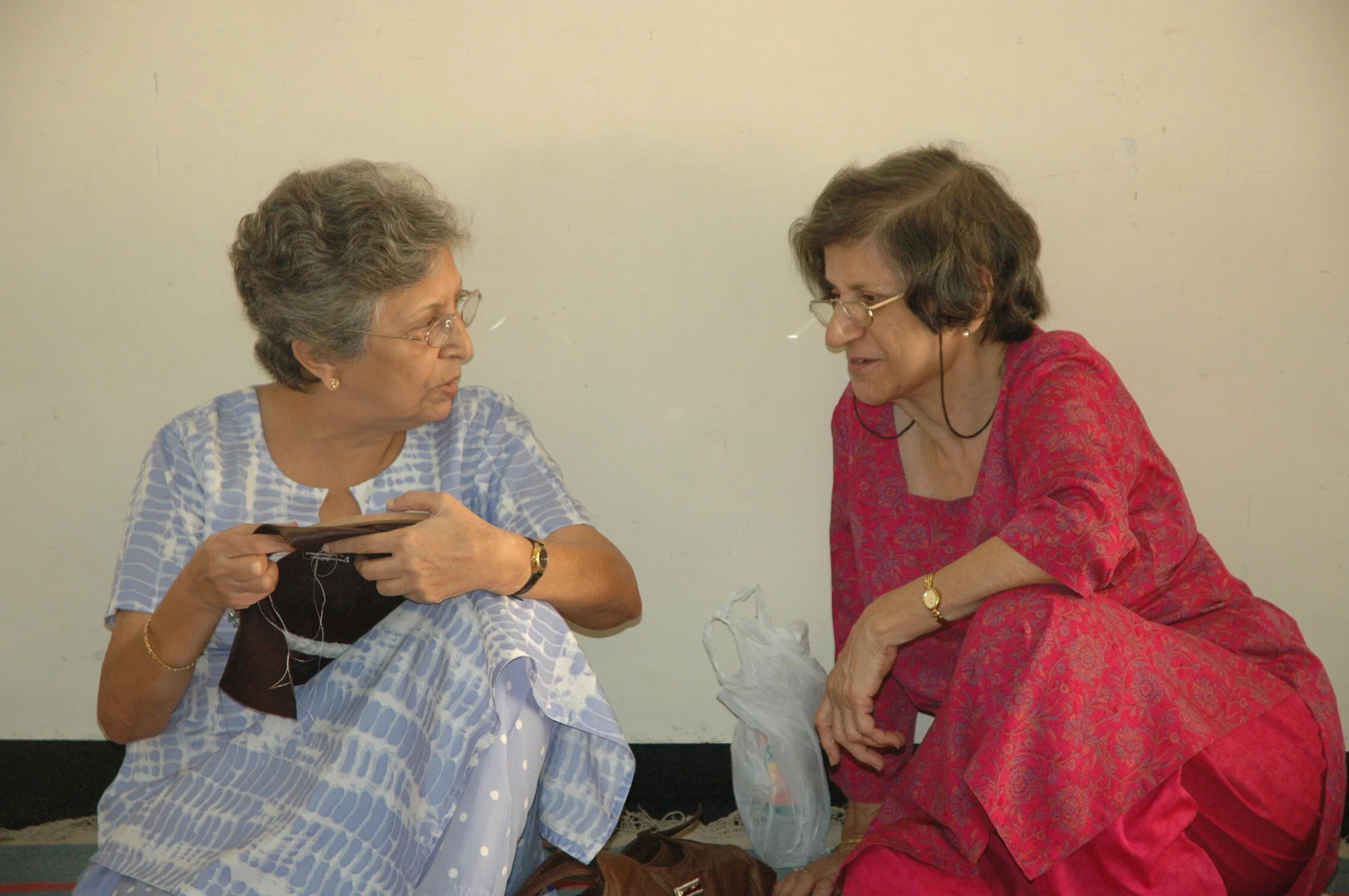
Department of Arts & Crafts
Textiles & Embroidery
Parsi embroidery is an artistic and cultural amalgamation of three unique design traditions- Iranian, Indian, Chinese and European. This has resulted in a distinctive style which blends nature’s creations, birds- real and exotic, flowers, plant life and animals with elements of mythology. These motifs are skillfully embroidered on the kors, garas, jhablas and ijars to be found in Parsi homes. Parsi embroidery is truly an intercultural art form, which has descended from Acaemenian times in an unbroken continuum.
After leaving Iran the Zoroastrians from Pars came to adopt Indian costumes, including the sari. But they gave it the stamp of their individuality and Parsi saris with their embroidery and gorgeous borders form a distinct and elegant part of the textile heritage of India. The embroidered Parsi saris amalgamated Indian and Chinese silk-weaving techniques and Chinese and European embroidery stitches and motifs.
Community accounts verbally passed down and still recalled by the elderly across India from Bharuch to Kolkata confirm the role the Chinese pherias played in familiarizing Parsi women with Chinese embroidery. Parsi elders recall how these cycle wielding Chinese men would leave their bundles of embroidered silk cloth on verandahs of Parsi homes, while they made their rounds selling their silk ware. When they returned in the afternoons, Parsi women, also free from their household chores, would sit on the verandahs with them observing them working on their small embroidery frames, thus learning their special embroidery stitches including their use of curved needles. With this newly acquired skill Parsi women created their own Garas, Jabhlas and Kors. The creations by Parsi women exhibited their preference for certain motifs such as the rooster and fish, which have significance in Zoroastrian tradition as against dragons and snakes popular in Chinese tradition.
Centred at Surat, three of India’s traditional crafts, the Surti Ghat, the Tanchoi and the Garo were pioneered by Parsi weavers. The Ghat was handwoven silk but so strong that it was compared to the strength of the Surat Ghat or Mountains, this is how this silk was named. The Sali Garo and Tanchoi were originally Chinese crafts, the tanchoi being named after the three (Tan) Parsi Joshi brothers from China (Choi). The famous Tanchois of Surat (and later of Benares) originated with three Parsi Jokhi brothers (tan -Choi) who learnt the technique in China and brought it to India. Gandhiji himself visited the Joshi family and invited him after Independence to organise the Tanchoi Centres, which today exist across India.
The Parzor team has been able to locate some of the first original sample-pieces of Tanchoi made on the looms with the seal of the family woven onto them.
Parzor Crafts
Parsis today seem to forget a great tradition of creativity, which has produced beautiful crafts in the past. With the end of Parsi trading in China this link is now gone and it is imperative to ensure that this tradition of embroidery is not lost forever. Its revival and survival has been undertaken by Parzor Foundation. The aim of Parzor Crafts is to rekindle interest and pride in this tradition while at the same time recording it for posterity. As part of Parzor Crafts, Parzor Foundation trains craft persons to revive Parsi embroidery in contemporary adaptations of original designs for home furnishings accessories and items for home decoration. The revival of this craft not only serves the purpose of preserving this craft heritage but also encourages pride and appreciation of the craft among members of the community while giving employment and livelihood to craft persons in India.
Parzor’s Craft Documentation program has also continued across India for two decades now. Priya Mani, Ashdeen Z. Lilaowala, Wei Zhu An, are some of the researchers who have recorded Parsi crafts in areas ranging from China to India and from Navsari to Madras. Researchers have discovered very important intercultural symbols from both the Chinese and Persian traditions and have also been working on special stitches and techniques. Various elderly Parsi ladies who are among the few left who still know the intricate and rare stitches, which make up the beauty of Parsi embroidery, have assisted Parzor.
Parsi crafts and their designs are a special contribution of this community, which have so far not received the acknowledgement they deserve. Parzor Crafts has been working to correct this wrong. The Parsis were influenced by both the eastern and western cultures of the world. Parsi textiles see extensive use Western motifs such as the Swiss roses and bows in garas, jhablas and kors, as also of traditional Indian motifs. In the first ever-serious research into the origin, history, development and technique of what is known as Parsi embroidery, the Parzor team has traveled across India and plans many more field trips in the country while also tracing roots and routes from Yazd and Kerman in Iran to Hong Kong, Shanghai and Canton in China. Many discoveries have already been made.
PARZOR CRAFTS is the revival branch of the Textile Research Module. We are happy the announce that UNESCO, after a rigorous selection process chose one of Parzor's Hand Embroidered stoles for the Seal of Excellence Award for Year 2008. Parzor Crafts was competing with over 180 countries.
The Zoroastrian reverence for nature has been celebrated in the motifs of their embroidery since time immemorial, the Rooster, symbolizing Sarosha and the Divine Fungus seen regularly on textiles give protection, especially to children when embroidered on their Jhablas, Taoist symbols decorate Parsi Kors, the Sassanian ‘Circlet of Pearls’ traveled from Zoroastrian Persia to China in the Tang Dynasty (618-907 AD) and then traveled back to the Parsis embroidered on the gara. So ‘Parsi embroidery’ is not just expensive, beautiful silk embroidery conceived, designed and executed by skilled Chinese craftsmen and simply ordered by prosperous Parsi traders who were involved in the China trade for their women folk, it is much more.
Recently a revival of Parsi kor embroidery is sweeping across India, with Parzor at its origins. This most attractive of the Parsi arts and crafts has produced invaluable garments fully embroidered by hand. The Gara, the Kor, Topi, Ijar are all examples which are embellished with perfect embroidery. The art was originally based on Chinese embroidery and contains motifs of birds, animals, flowers, scenes and stories often with clear Chinese influence e.g. Pagodas and Chinamen.
Exhibitions
In order to endure, a craft needs to cater to the needs of the time. While the classic embroidery patterns of the gara and kor are a treasured part of Parsi heritage, the actual craft technique needs to be invigorated. In a constructive effort to preserve and adapt this craft for the community and the country, Parzor has conducted craft seminars/workshops in different cities of India- beginning in 2003, Parzor has conducted workshops at Ahmedabad, Mumbai, Navsari and Delhi. A symposium has been held in Mumbai along with a Parsi textile exhibition.
These workshops are especially aimed at creating awareness and sensitizing the Parsi community by instilling a sense of pride in this wonderful heritage. The workshops have drawn upon the expertise of some of India’s best designers as well as older Parsi practitioners of the craft both interacting with and motivating the chosen craftsmen. After familiarizing them with the Parsi embroidery tradition, the workshops have encouraged craftspersons to initiate new ideas and carry the craft forward. A craft can only prosper if the craftspersons are patronized to innovate and create new forms, thus constantly challenging and improving their own skills. There is an assurance of benefit to the craftsmen involved. Efforts are made to ensure that there is a contemporization of products while retaining the origins and hallmarks of the Parsi tradition.
Parzor hopes to encourage young Parsis and enterprising Zoroastrians to continue this ancient heritage as well as use the workshop platforms as opportunities to build teams, collaborate with crafts-persons and develop a business module, which will take this heritage into the future. The workshops have empowered members of the community with technical knowledge, introduced them to professional designers as well as taught basic management skills, packing of products and interaction with prospective buyers.
Workshops in Ahmedabad








Workshops in Delhi






Workshops in Mumbai









Workshops in Navsari






Related Articles



